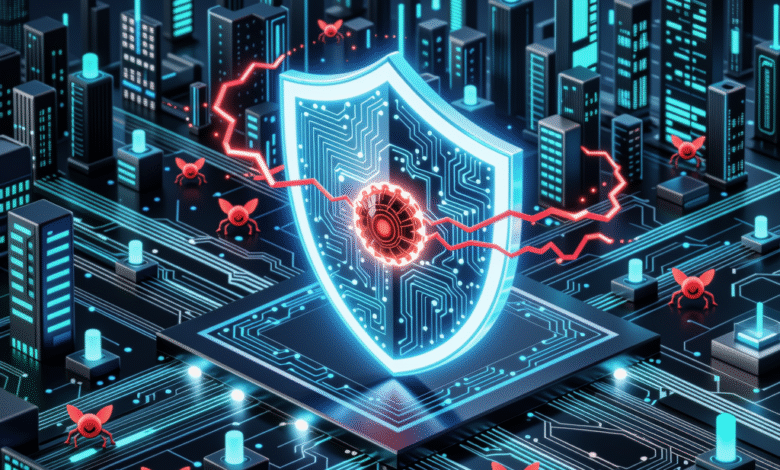Securing AI Agents in SaaS with Obsidian

▼ Summary
– Obsidian Security has launched a new defense solution specifically designed to govern how AI agents access data within SaaS environments.
– The rise of AI agents, often built by employees on low-code platforms, creates a significant security blindspot due to their broad privileges and ability to move data autonomously.
– These AI agents pose a tangible risk, as they can be compromised to leak data and move laterally across connected applications at machine speed, causing widespread damage.
– Obsidian’s solution provides unique visibility by using a continuously learning Knowledge Graph to map and correlate agent activity, privileges, and workflows in real-time.
– This capability allows security teams to detect and stop unauthorized agent behavior faster than traditional tools, enabling enterprises to scale AI adoption securely.
Obsidian Security has introduced a specialized defense system for SaaS AI agents, offering businesses a dedicated tool to manage and control how artificial intelligence interacts with data across their software platforms. This launch arrives at a crucial moment, as SaaS applications have become a primary target for cyberattacks within corporate infrastructures. The new solution specifically addresses the security gap created by the rapid integration of AI agents, where unmanaged systems and excessive permissions can lead to significant and cascading security threats.
Recent incidents highlight the urgency of this problem. In the Salesforce attack attributed to UNC6040, attackers used voice phishing to gain initial entry, subsequently executing bulk API queries to steal and extort vast amounts of data. Another event, the Salesloft Salesforce supply chain breach (UNC6395), demonstrated the vulnerability inherent in SaaS-to-SaaS integrations. A single compromised chatbot integration led to unauthorized access spreading across Salesforce and into connected services like Google Workspace, Slack, and Amazon S3, affecting hundreds of companies.
The proliferation of AI agents intensifies these SaaS security challenges. Platforms such as Microsoft Copilot Studio, ChatGPT Enterprise, and Salesforce Agentforce empower employees with little technical expertise to build and deploy autonomous agents. These agents can perform complex tasks, query databases, and make decisions independently, often operating with broad permissions and long-lasting access tokens. They move sensitive information at machine speed, meaning a single compromise can result in massive data leaks and lateral movement across an organization’s entire SaaS ecosystem.
Hasan Imam, CEO of Obsidian, emphasized the real-world scale of the risk. “The shift to AI agents is already happening, and the dangers are very present,” he stated. “With 87% of enterprises having Microsoft Copilot enabled, over half of these agents handle sensitive data, and 90% are over-permissioned, the threat is active and often undetected.” He noted that these agents move data at a volume sixteen times greater than human users, creating a substantial attack surface that traditional security tools are ill-equipped to monitor.
Conventional security solutions lack the necessary visibility into machine-driven activities. They cannot properly contextualize the underlying privileges or enforce controls at the speed required by autonomous systems. Sunil Seshadri, EVP and CSO at HealthEquity, explained the critical need for speed, saying, “The difference between containment and a major breach is reaction time. AI agents can trigger workflows across multiple apps in seconds, often unnoticed. Obsidian provides near real-time detection, allowing teams to intervene before a situation escalates.”
Obsidian’s approach to securing SaaS environments against AI agent risks is built on a foundation of extensive threat intelligence. The system leverages a repository of over 500 curated real-world threats, enriched with browser-based activity data and deep integrations with major SaaS and AI platforms. This intelligence fuels the Obsidian Knowledge Graph, a continuously learning model that correlates user and agent activity, identity privileges, and workflows into a single, unified view.
This live map grants security teams unprecedented real-time visibility and context, enabling them to govern AI agent usage and halt unauthorized behavior directly within their SaaS environments. Khanh Tran, CPO at Obsidian, shared insights from customer deployments, noting, “Our Knowledge Graph consistently shows that AI agents are granted, on average, ten times more permissions than necessary when compared to actual user entitlements. By integrating platforms like n8n and ChatGPT Enterprise with our graph, security teams gain the clarity needed to stop risks from spreading.”
The latest product release from Obsidian is designed to empower enterprises to scale their AI agent development securely. Key new capabilities provide the tools necessary for innovation without compromising on security or governance.
(Source: HelpNet Security)